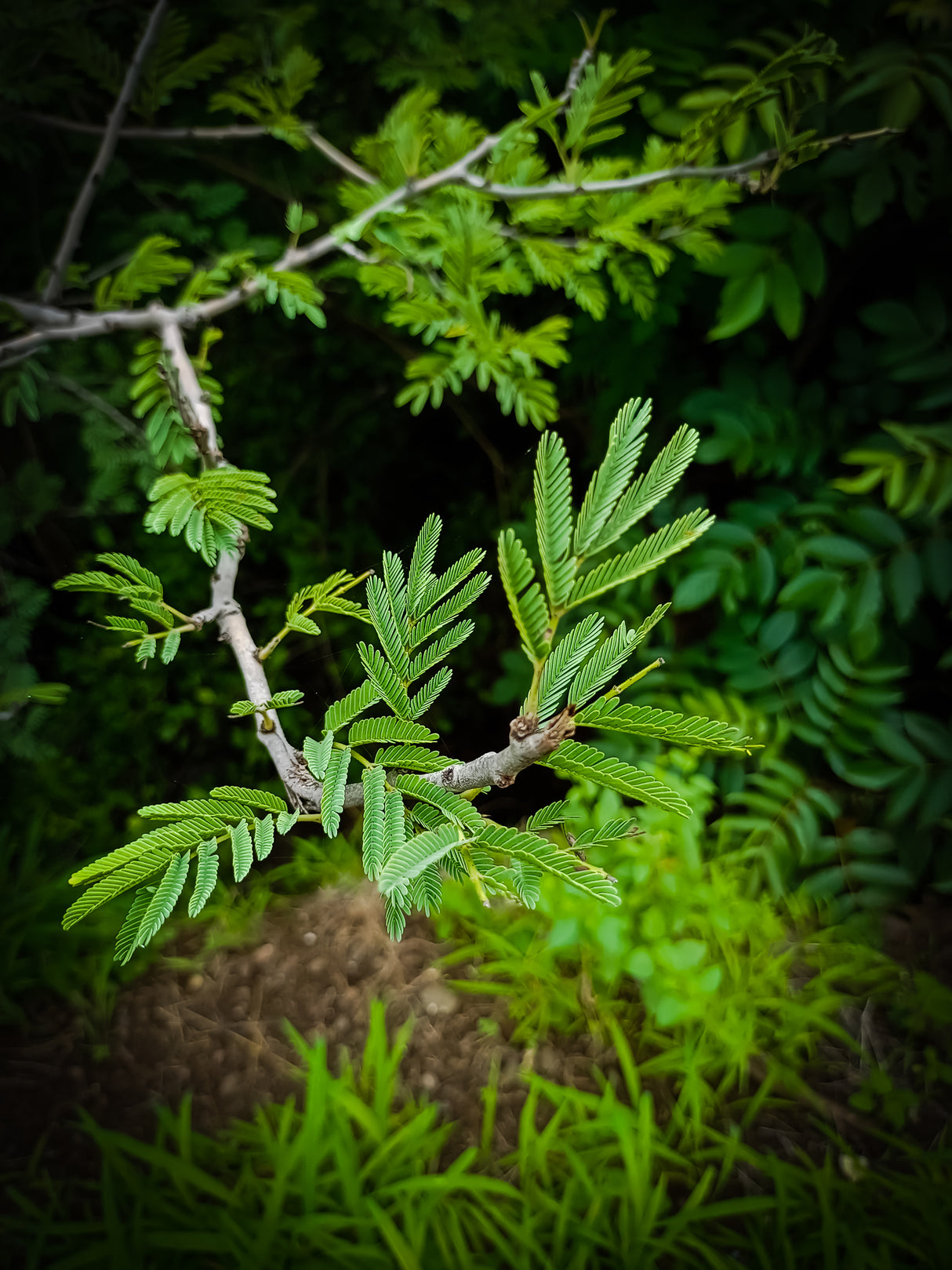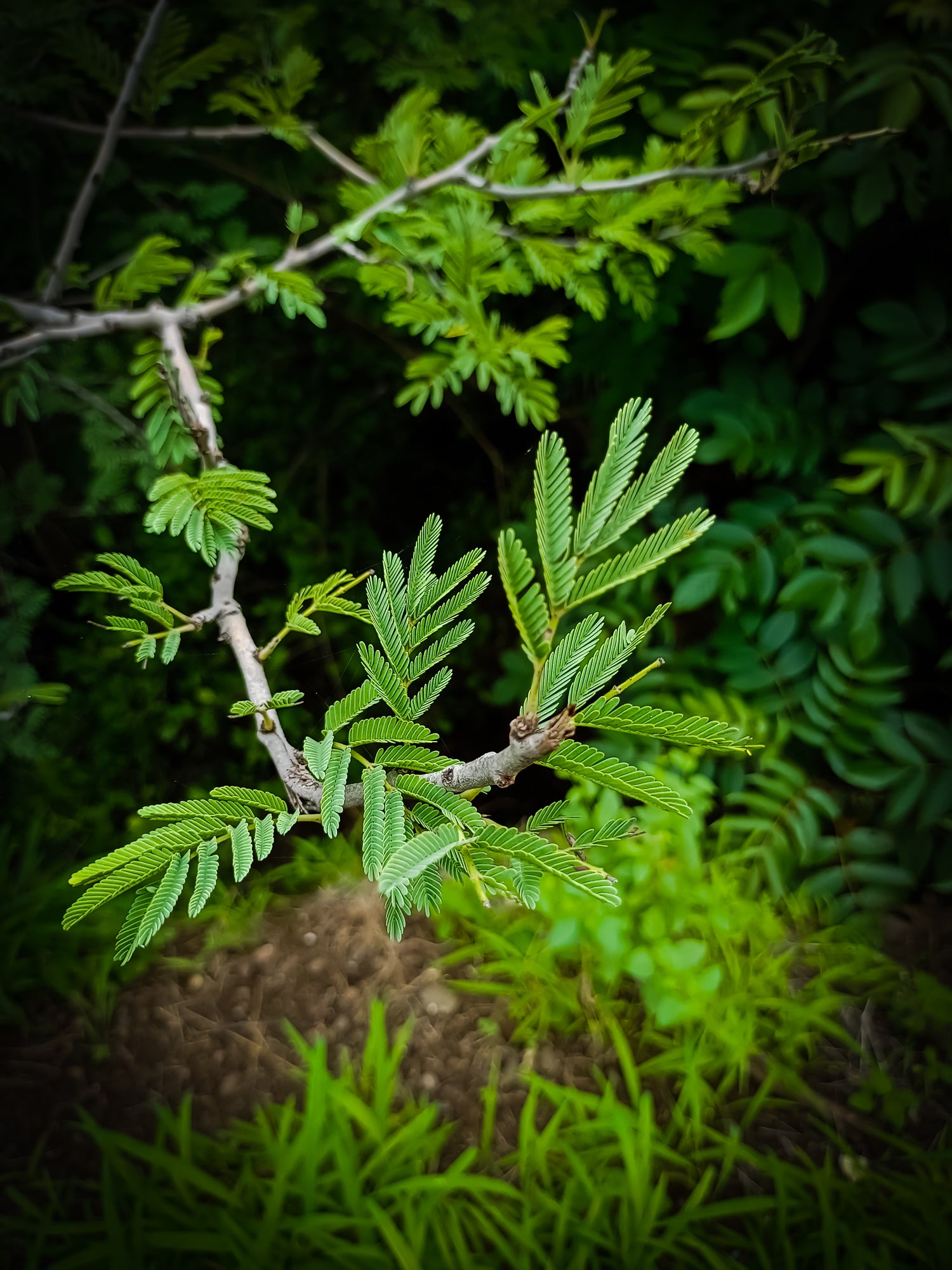Description
Description
The Vachellia leucophloea, commonly known as White Bark Acacia, is a medium to large deciduous tree recognized for its striking white to pale gray bark and graceful, spreading canopy. This hardy species, native to South and Southeast Asia, grows up to 15–25 meters tall and is highly adaptable to arid and semi-arid conditions. Its fine, feathery foliage provides light shade, while its small, fragrant yellowish-white flowers bloom in clusters during the growing season.
The tree plays an important ecological and economic role, often used for fodder, timber, shade, and soil stabilization in harsh environments.
Specifications:
- Height: 15–25 meters
- Width: 8–12 meters
- Native to: South and Southeast Asia
- Foliage: Fine, bipinnate leaves; deciduous
- Growth rate: Moderate
Conditions:
- Soil: Prefers well-drained, sandy, or loamy soils; tolerates poor and saline soils
- Light: Full sun
- Water: Low; extremely drought-tolerant once established
- Climate: Thrives in arid, semi-arid, and tropical regions
Additional Features:
- Flowers: Small, fragrant yellowish-white flowers in clusters, attracting pollinators
- Uses: Ideal for agroforestry, shade, soil stabilization, fodder, and firewood
- Spacing: Plant 8–10 meters apart for individual growth or grouped plantings
- Low Maintenance: Requires minimal care; prune as needed to shape canopy
- Pest Resistance: Generally pest-free and resilient
- Environmental Benefits: Improves soil fertility through nitrogen fixation, prevents erosion, and provides habitat for wildlife
- Cultural and Economic Significance: Used for timber, fuel, and traditional medicine in its native regions
The White Bark Acacia is a resilient and multifunctional tree, perfect for harsh climates, sustainable landscapes, and agricultural systems requiring shade, fodder, or soil improvement.
Delivery Information
Delivery Information
We offer flexible delivery options to ensure your tree arrives in perfect condition, whether you're located nearby or on the other side of the world.
- Domestic Deliveries:
We provide reliable delivery services across the country, utilizing our fleet of specialized trucks and train freight networks. Whether you're in a metropolitan area or a remote location, we ensure your trees arrive safely and efficiently. - International Deliveries:
For our global customers, we coordinate delivery via sea freight. With 30+ years of exporting experience, every tree is carefully prepared to meet international biosecurity standards and packaged for safe transport to its destination.
Our team will work closely with you to arrange the most suitable delivery method based on your location, project timeline, and tree size. No matter where you are, we ensure a seamless delivery experience.
Have additional questions? Contact us to discuss your specific delivery requirements!
FAQ's
FAQ's
How are ex-ground trees prepared for delivery?
All ex-ground trees are carefully dug with their rootball intact to preserve the root system and minimize transplant shock. Each tree is stabilized and treated with specialized solutions to promote health during transit. The rootball is wrapped to retain moisture and protect it from damage, and water crystals are added to provide essential nutrients and hydration for the journey. These meticulous preparations ensure your tree remains healthy and ready for planting, whether it’s traveling across the country or overseas.
How long does delivery take?
Delivery times vary depending on your location and the size of your order. Domestic deliveries typically take 1–2 weeks, while international shipping may take several weeks depending on the destination. Contact us for specific timelines.
Are there minimum order quantities for delivery?
For local and nationwide orders, there are no strict minimums, though delivery costs may vary based on order size. For international orders, a minimum quantity is often required to optimize freight efficiency. Contact us to discuss your needs.
Do you provide installation services?
While we focus on the supply and delivery of trees, we can connect you with trusted landscaping partners who specialize in tree installation and site preparation.
Can I visit your farms to select trees?
Yes, we welcome visits to our farms by appointment. Seeing the trees in person allows you to select the perfect specimens for your project. Contact us to schedule a visit.



 Inspection available upon request
Inspection available upon request
 Photos are of example stock
Photos are of example stock
 International Delivery Available
International Delivery Available
 Available For Export
Available For Export
